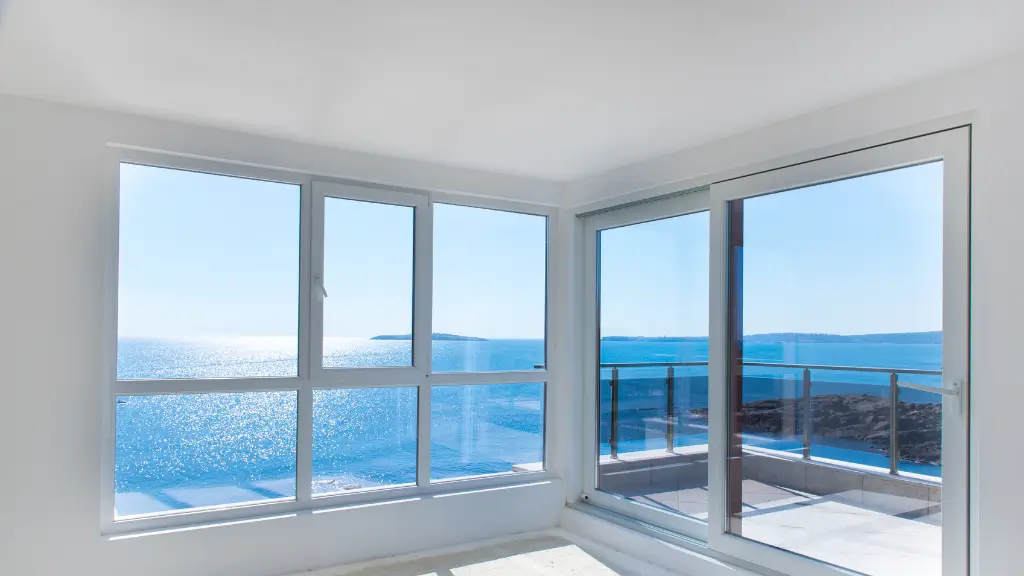In the dynamic world of home improvement, uPVC windows and doors have become a popular choice for smart homeowners. Unplasticized polyvinyl chloride, or uPVC, offers a winning combination of energy efficiency, durability, and environmental friendliness. From reducing energy bills and requiring minimal upkeep to providing enhanced security and a range of design options, uPVC stands out as a versatile and sustainable solution.
Energy Efficiency
Energy efficiency is a key consideration for homeowners looking to make sustainable choices for their properties. uPVC (unplasticized polyvinyl chloride) windows and doors have gained popularity for their significant contribution to energy efficiency. Let’s delve into how uPVC stands out in this aspect, offering both economic and environmental benefits.
Explanation of how uPVC contributes to energy efficiency
uPVC is a thermally insulating material, meaning it has the ability to resist the transfer of heat. This property makes uPVC windows and doors excellent at preventing heat loss during the colder months and minimizing heat gain in warmer weather. The insulating properties of uPVC help create a more stable and comfortable indoor environment, reducing the reliance on heating and cooling systems.
Reduction in heat loss and energy bills
By installing uPVC windows and doors, homeowners can experience a noticeable reduction in heat loss from their homes. The tight seals and insulation provided by uPVC contribute to maintaining a consistent indoor temperature, leading to lower energy consumption for heating and cooling. As a result, households can enjoy decreased energy bills, making uPVC a cost-effective choice in the long run.
Environmental impact of energy-efficient windows and doors
The energy efficiency of uPVC windows and doors not only benefits homeowners but also has positive implications for the environment. Reduced energy consumption means lower greenhouse gas emissions, contributing to a smaller carbon footprint. Choosing uPVC helps align homes with sustainable practices, making it an environmentally responsible choice for those concerned about the ecological impact of their living spaces.
Durability and Longevity
In addition to its energy-efficient properties, another compelling feature of uPVC windows and doors is their exceptional durability and longevity. Let’s explore how uPVC stands the test of time and compares favorably with other materials such as wood and aluminum.
Discussion on the durability of uPVC material
uPVC is known for its robust and durable nature. Unlike traditional materials like wood, uPVC does not rot, warp, or corrode, even when exposed to the harshest weather conditions. This durability makes uPVC windows and doors a reliable choice for homeowners seeking long-lasting solutions for their homes.
Comparison with other materials like wood and aluminum
When compared to traditional materials like wood, uPVC proves to be more resistant to environmental elements. Wooden frames may degrade over time due to moisture, insects, and fluctuating temperatures. In contrast, uPVC maintains its structural integrity, requiring minimal maintenance to keep it in prime condition. Aluminum, while strong, is prone to corrosion, and uPVC outshines it in terms of longevity and resistance to wear and tear.
How durability translates to long-term cost savings for homeowners
The durability of uPVC windows and doors translates into significant cost savings over their lifespan. Homeowners investing in uPVC can expect minimal maintenance costs compared to materials like wood that may require regular painting or sealing. The longevity of uPVC means fewer replacements, reducing the overall financial impact on homeowners over the years.
Low Maintenance Requirements
One of the standout advantages of uPVC windows and doors is their low maintenance requirements, making them an appealing choice for homeowners with busy lifestyles. Let’s explore the benefits of uPVC in terms of maintenance and provide some practical tips for easy cleaning and care.
Advantages of uPVC in terms of maintenance
Maintaining uPVC windows and doors is remarkably easy, thanks to the inherent properties of the material. Unlike wood, uPVC does not require painting or staining to protect it from the elements. It is resistant to rot, corrosion, and fading, reducing the need for regular upkeep. This makes uPVC an ideal choice for those seeking windows and doors that remain aesthetically pleasing with minimal effort.
Tips for easy cleaning and care
Keeping uPVC windows and doors in top condition requires only simple cleaning routines. A mixture of mild detergent and water is usually sufficient to remove dirt and grime. Regular cleaning, especially in areas prone to pollution or salt exposure, helps prevent the buildup of debris and maintains the visual appeal of uPVC surfaces. Additionally, lubricating hinges and other moving parts ensures smooth operation over time.
Cost-effectiveness over the lifespan of the windows and doors
The low maintenance requirements of uPVC contribute to its cost-effectiveness over the lifespan of windows and doors. Homeowners can save both time and money by choosing uPVC, as there is no need for expensive maintenance procedures or frequent replacements. The longevity of uPVC, combined with its minimal maintenance demands, makes it a practical and financially savvy choice for those looking for hassle-free solutions for their homes.
Enhanced Security Features
Home security is a top priority for homeowners, and uPVC windows and doors provide enhanced security features that contribute to peace of mind. In this section, we’ll explore the inherent strength of uPVC, discuss advanced locking mechanisms, and highlight how these elements collectively contribute to a secure living environment.
Explanation of the inherent strength of uPVC
uPVC is a strong and durable material, making it inherently resistant to forced entry. The robust nature of uPVC frames, combined with their multi-chambered design, adds an extra layer of security to homes. Potential intruders face a formidable barrier when attempting to breach uPVC windows and doors, providing homeowners with a sense of confidence in their property’s security.
Overview of advanced locking mechanisms
In addition to the inherent strength of uPVC, modern uPVC windows and doors are equipped with advanced locking mechanisms. Multi-point locking systems, which secure the window or door at multiple points along the frame, significantly enhance security. These systems are designed to withstand considerable force, offering a high level of protection against break-ins.
Contribution to home security and peace of mind
The combination of uPVC’s natural strength and advanced locking systems contributes substantially to home security. Homeowners can rest assured that their uPVC windows and doors act as a robust deterrent to unauthorized access. This sense of security not only protects property and belongings but also fosters a comfortable living environment, allowing residents to enjoy their homes with peace of mind.
Versatility in Design
While functionality and efficiency are crucial, homeowners also appreciate the ability to express their unique style through the design of their windows and doors. In this section, we’ll explore the versatility of uPVC in design, showcasing the variety of styles, colors, and finishes available. We’ll also discuss how uPVC can complement different architectural designs and the customization options it offers to homeowners.
Showcase the variety of styles, colors, and finishes available
One of the notable advantages of uPVC windows and doors is the extensive range of styles, colors, and finishes available. Homeowners can choose from a diverse selection to match their preferences and the architectural style of their homes. Whether it’s a classic, modern, or eclectic design, uPVC provides flexibility in aesthetic choices.
How uPVC can complement different architectural designs?
uPVC’s versatility extends to its ability to complement various architectural designs. Whether your home has a traditional, contemporary, or even a futuristic design, uPVC windows and doors can be tailored to seamlessly integrate with the overall aesthetic. This adaptability allows homeowners to enhance the curb appeal of their homes while maintaining a cohesive and stylish look.
Customization options for homeowners
Beyond the range of styles, uPVC offers customization options that empower homeowners to create windows and doors tailored to their specific needs. From different types of glazing to decorative elements and hardware choices, uPVC can be personalized to match individual preferences. This level of customization ensures that each home featuring uPVC windows and doors is a unique expression of the homeowner’s taste and style.
Environmental Sustainability
As environmental consciousness grows, homeowners are increasingly seeking sustainable solutions for their properties. In this section, we’ll discuss the eco-friendly aspects of uPVC, including its environmental sustainability, recycling processes, and the impact of uPVC windows and doors on reducing the overall carbon footprint.
Discussion on the eco-friendly aspects of uPVC
While PVC is a synthetic material, the unplasticized version used in uPVC is considered environmentally friendly. uPVC is recyclable, and its production process requires less energy compared to many other building materials. Additionally, the long lifespan and durability of uPVC contribute to its overall sustainability by reducing the need for frequent replacements.
Recycling and life cycle analysis
One of the key environmental benefits of uPVC is its recyclability. At the end of their life cycle, uPVC windows and doors can be recycled and transformed into new products, minimizing the environmental impact associated with disposal. Life cycle analyses have shown that, when considering the entire life span of uPVC products, including production, use, and end-of-life stages, uPVC performs well in terms of environmental sustainability.
Impact on reducing carbon footprint
Choosing uPVC windows and doors can significantly contribute to reducing the carbon footprint of a home. The energy efficiency of uPVC discussed earlier, plays a crucial role in this reduction by decreasing the overall energy consumption required for heating and cooling. Additionally, the recyclability of uPVC ensures that the material does not end up in landfills, further mitigating environmental impact.
Conclusion
uPVC windows and doors offer a comprehensive solution for homeowners, combining energy efficiency, durability, low maintenance, enhanced security, versatile design options, and environmental sustainability. With the ability to reduce energy bills, provide long-term cost savings, and contribute to a secure and aesthetically pleasing home, uPVC proves to be a reliable and practical choice. Real-world testimonials underscore the positive impact of uPVC on home comfort and satisfaction, making it a valuable investment for those seeking a well-rounded and sustainable solution for their living spaces.


